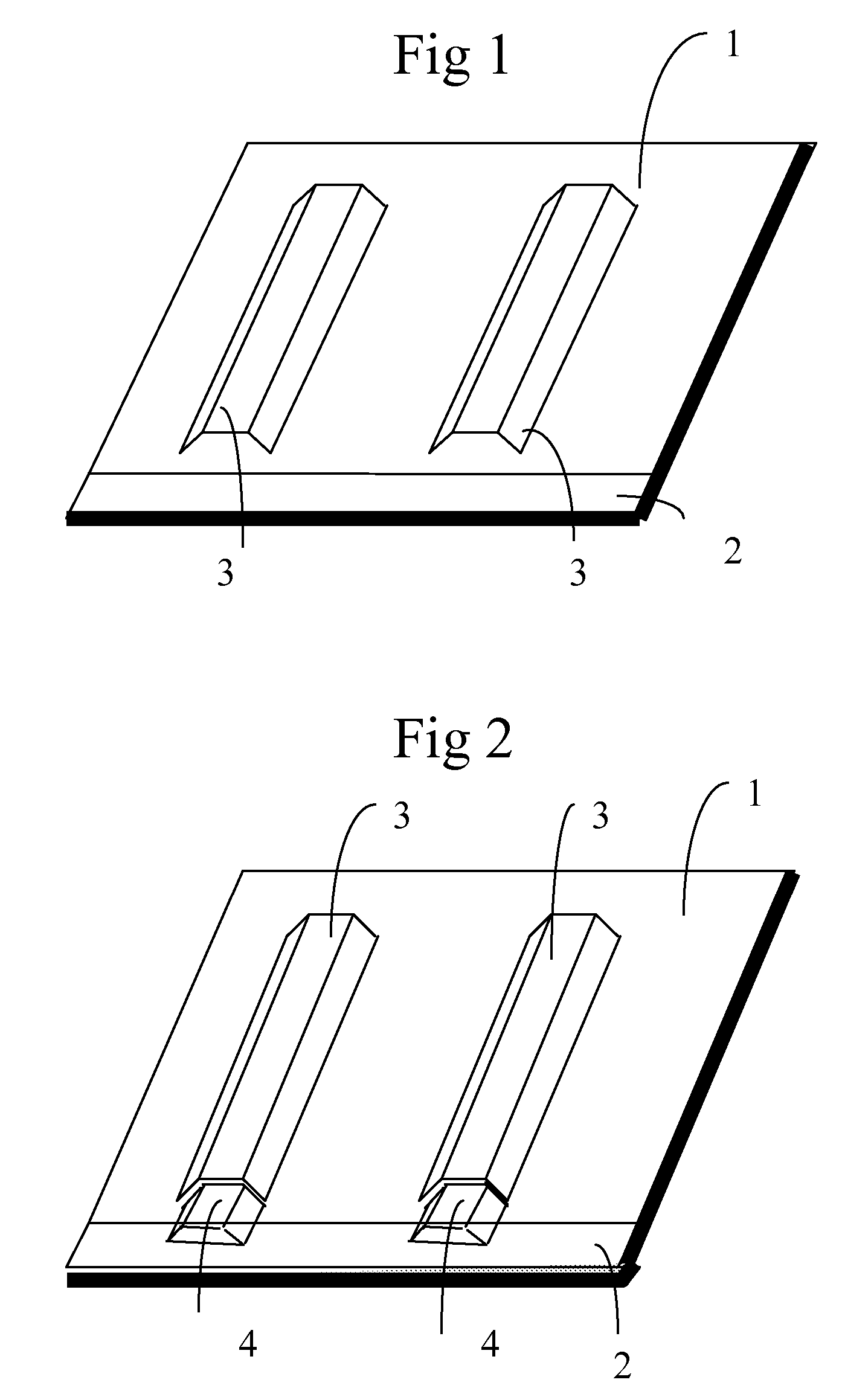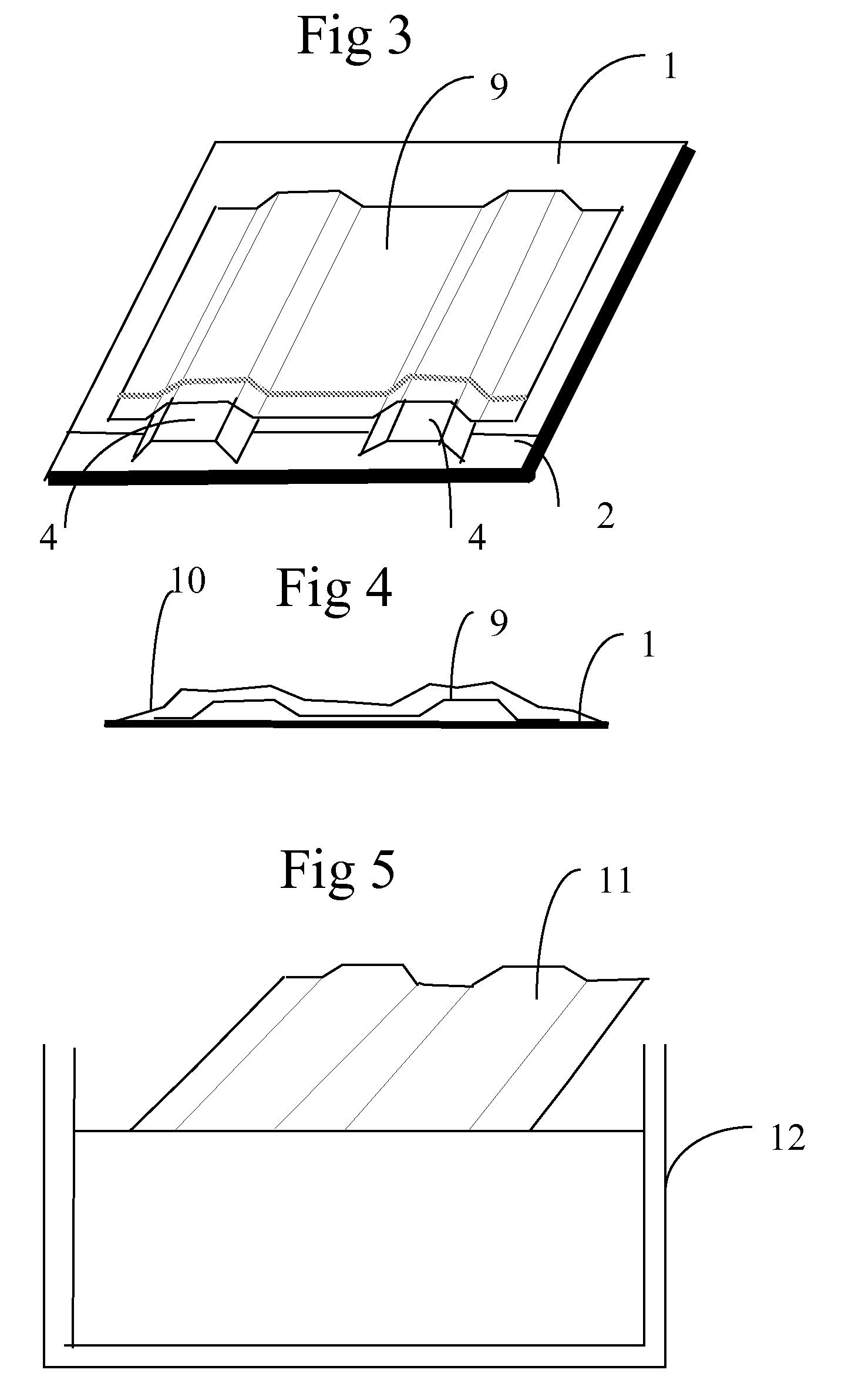Method for the manufacture of a composite article
a composite article and manufacturing method technology, applied in the field of composite article manufacturing, can solve the problems of increasing the weight of the additional material, reducing the strength of the structural element, and requiring expensive machines to perform these operational steps, so as to achieve the effect of reducing the tension of the material, no galvanic corrosion, and low thermal expansion coefficien
- Summary
- Abstract
- Description
- Claims
- Application Information
AI Technical Summary
Benefits of technology
Problems solved by technology
Method used
Image
Examples
Embodiment Construction
[0028]In FIG. 1, a composite plate 1 is arranged on a base plate 2. The base plate 2 is a thick sheet, for example made of metal. In the shown figure, the base plate has larger dimensions than the composite plate 1. Two formers 3 are arranged on top of the composite plate 1. The formers 3 are for example made of a water-soluble stabilizing fiber composite.
[0029]In FIG. 2, a fitting 4 is arranged in the extension of each former 3. The fittings are intended to be integrated in the final article such that it is either detachable or fixed after curing. In the alternative embodiment of FIG. 8, the base plate 2 is provided with pins 5 mounted in locations and formed so as to fix the fittings 4 (not shown in FIG. 2) in a predetermined position. In another alternative embodiment, as disclosed in FIG. 9, a laser arrangement 6 is mounted for example in the ceiling. The laser arrangement is arranged to emit a laser curtain in a predetermined number of directions. The directions are set such th...
PUM
| Property | Measurement | Unit |
|---|---|---|
| pressure | aaaaa | aaaaa |
| temperature | aaaaa | aaaaa |
| pressure | aaaaa | aaaaa |
Abstract
Description
Claims
Application Information
 Login to View More
Login to View More - R&D
- Intellectual Property
- Life Sciences
- Materials
- Tech Scout
- Unparalleled Data Quality
- Higher Quality Content
- 60% Fewer Hallucinations
Browse by: Latest US Patents, China's latest patents, Technical Efficacy Thesaurus, Application Domain, Technology Topic, Popular Technical Reports.
© 2025 PatSnap. All rights reserved.Legal|Privacy policy|Modern Slavery Act Transparency Statement|Sitemap|About US| Contact US: help@patsnap.com



